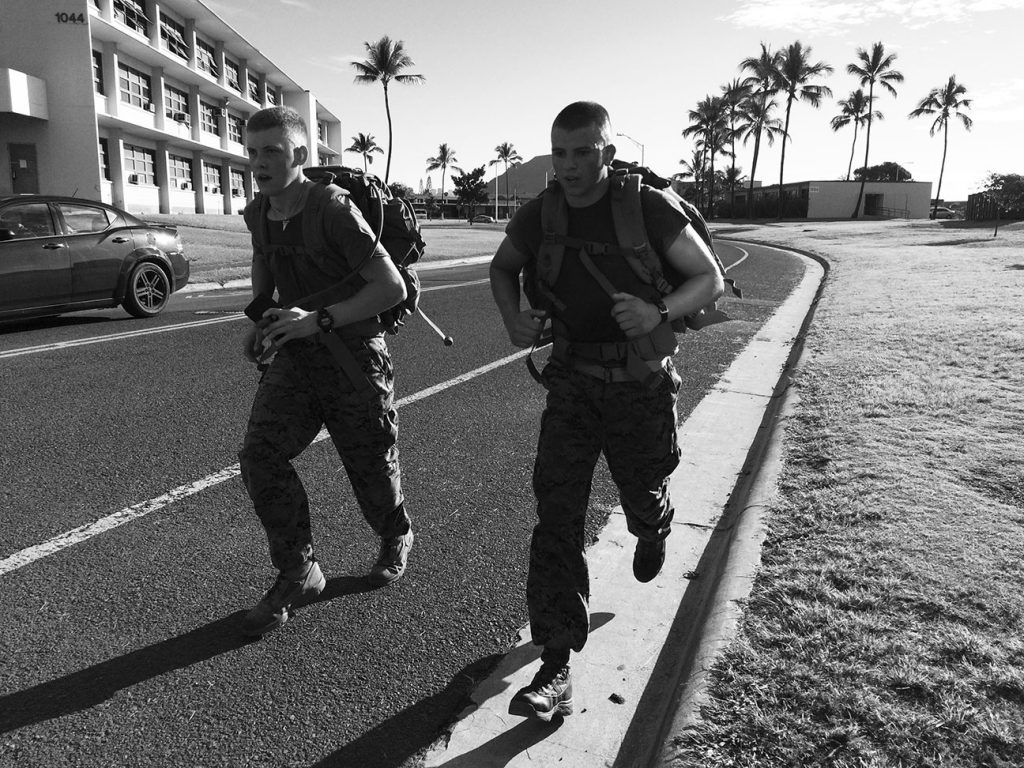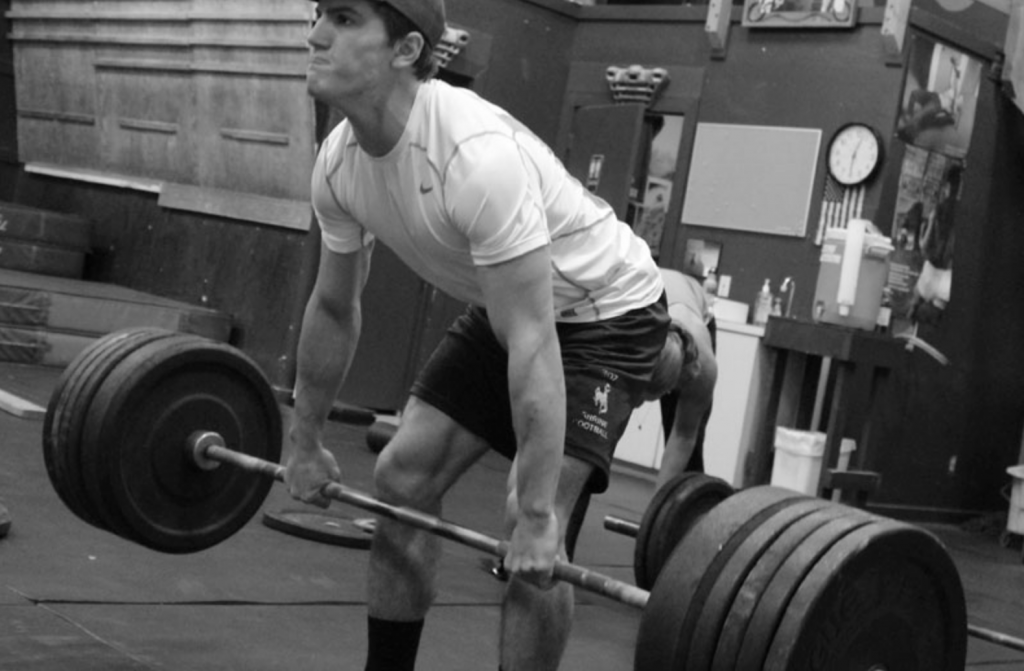QUESTION
I’ve been on a team that used your programs for about 2 years then got transferred and am working out on my own. I purchased and followed the ubrr program to the t and although it did best my scores across the board, I found it very repetitive. Then I started another program of yours and after only two weeks in, I’m bored. Seeing only a week of sample training didn’t show me that it is the same thing over, and over, and over minus slight changes on the Wednesday workout. Before I purchase the next program (possibly the 357 strength”) what programs have some sort of variety for the 6-8 week program?
ANSWER
MTI’s programming isn’t random. We’re not interested in keeping the athlete entertained. The focus is on developing specific fitness attributes. We do this by identifying the specific fitness attributes to be trained, finding or designing exercises to train them, and hammering them again and again. The focus on the UBRR events is what led to your best score in that event.
That being said, we’re not ignorant to the “Burden of Constant Fitness” faced by tactical athletes. This is why our programming includes two general categories – “sport-specific fitness” and “base fitness.”
Our PFT/course/selection/event plans are all in the “sport-specific” category and are super effective because of their laser-focus on improving the specific fitness demands of the event.
All of our plans have some type of progression, but the “base fitness” plans do not have the same type of focus as the event/PFT/course/selection plans and will offer more variety.
For you I’d recommend the plans/order in the
Greek Hero Series, which are designed as day-to-day programming for SOF and other military athletes. These plans concurrently train strength, work capacity, endurance (run, ruck), chassis integrity and tactical agility. Follow the plans in order – beginning with
Hector.
If you have a swim-based mission set, pivot to the
Pirate Series, which includes pool work.
– Rob
QUESTION
Thank you for the great resource that you have put together! What plan would you recommend for a tournament playing tennis player?
ANSWER
Our focus is on mountain and tactical athletes, and I don’t have a tennis plan. From what I do have, I’d recommend the plans/order in our
Country Singer Packet of Plans, which apply MTI’s programming methodology to general fitness for civilian athletes.
Note however, this is base fitness programming – not sport specific to tennis.
– Rob
QUESTION
My wife bought me a rogue squat rack and adjustable bench for Christmas. I’m looking for a 3 week, garage gym plan. I’d greatly appreciate any suggestions!
ANSWER
– Rob
QUESTION
I’m interested in your Backcountry Hunting program, but would probably do the Backcountry Packet to ease into it a little bit because I’ve had lower back problems in the past. I’m also worried about anything that will lead to squats,cleans,etc. in the gym because I’ve never been much of a gym guy and have never done those exercises. And many programs I’ve seen seem to concentrate on that sort of thing. I have re-aggravated my back in the gym before. Anyways, do you have any kind of trial so I could try before I buy? I’ve seen the sample exercises but would like to see more.
ANSWER
Click the “Sample Training” tab for any/all of the individual plans in the packet to see sample training sessions – most the time it will be the entire first week of the plan. It is for the
Backcountry Big Game Training Plan.
I’d encourage you to complete the first week to see if our stuff is for you.
– Rob
QUESTION
I’m having trouble getting better sit up numbers for the SEAL pst, which program of yours do you recommend? Thanks for all you do.
ANSWER
– Rob
QUESTION
I have been looking through your training plans and have a few questions.
I have just completed a strength program 5×5. I can squat and bench plenty, however I feel I lost endurance and overall capacity for my other sports.
My background is as a collegiate athlete/ski racer as well as an Enduro style MTB rider.
My current goals is to still ski 3-4 hours lift service in heavy terrain, back country ski for day trips, ride MTB for 2-3 hours with 2-3k of climbing.
Currently I skied 4 hours in technical terrain and pretty much had my quads destroyed.
As it is later in the season and MTB season will be starting soon I’m unsure as to what program would be the best.
ANSWER
I don’t have a combined ski/MTB plan. From what I do have and given your goals,
This plan will do a good job transferring to MTB.
– Rob
QUESTION
I was interested in your running improvement plan, however, I was wondering if you all had a program for someone who wasn’t able to run 5mi and wanted to build to the running improvement plan. I noticed in the sample that at the first week requires a 5mi run. Or is there a modified distance you recommend?
ANSWER
We have 3 plans focused on running improvement:
1)
Running Improvement Plan – 15 week plan built around a 1.5 mile assessment, then 3 mile assessment, then 6 mile assessment
I’d recommend #1 for you – which starts with a 1.5 mile assessment.
QUESTION
I’m quite new to working out, but I’ve decided to put my dedication into becoming fit enough to go through RASP. What series of plans would you recommend to build someone from the ground up?
My current plan is the get to where I can max the APFT and then continue on to the RASP program. I think I also might need a plan to strengthen myself, and/or gain muscle.
If this matters, I’m:
5’5” Male
125-130 pounds
ANSWER
– Rob
QUESTION
I have only 5 weeks to prepare for a 7 day backcountry ski trip in Canada and I plan to skin and ski every day. Yes I know, (insert lame excuses here) my last 2 months have been bad health wise. But I’d like to try one of your training programs and obviously if I had 7 weeks I’d buy the “backcountry ski pre season training” program but knowing my time constraint I’m wondering what advice you might have? Should I still buy this one and trim it down to 5 weeks – and if so how do you suggest I do it? Or another program you suggest?
Thank you for the advice!
ANSWER
Yes on the Backcountry Ski Season Training Plan. Complete the first 5 weeks.
– Rob
QUESTION
I just finished the off-season plan for endurance athletes and was very satisfied. I was challenged often and I finished feeling more like a functional human then I have felt in a long time.
I’m a competitive amateur triathlete with 5 Kona finishes under my belt. (And one in the top 100 overall!) More importantly, I’m a Navy Civil Engineer Corps Officer, a Seabee, and a Navy Diver. While my job often has me fighting a desk (who am I kidding, almost always has me fighting a desk) I still have a responsibility to stay fit enough to not drag down a dive side. So strength, power and resiliency may be more important to me than your average triathlete.
I’m excited to start your “in season” plan for endurance athletes as a way to keep strength training in my approach to the 2019 season. Unfortunately, I’m having trouble finding a facility here around Pearl Harbor with barbells, dumbbells and kettlebells that will also let me use sandbags. Can you recommend alternatives to the sand bag exercises in the “in season” plan?
ANSWER
Sorry – there’s not replacement for a sandbag. Others make their own and bring it to the gym. Be resourceful.
– Rob
QUESTION
I am currently on Week 2 of the FBI PFT plan and I’m definitely seeing results. The 400 meter splits are causing me some difficulty; my hamstrings tighten up around the 200m mark around Round 3/4 and I usually end up slowing down during the later rounds because of it. Are there additional stretches I should do or foam roll? I think the sprint will probably be the event I’ll have the most difficulty with.
ANSWER
Add another couple round to your warm up and add in the
Toe Touch Complex each round.
– Rob
QUESTION
I just recently order the app with the monthly service and was wondering your opinion on which program/programs I should use. I am currently a V5/V6 climber and would like to get that to V8/V9 and have been climbing for about a year. I haven’t gotten to get on ropes much but have climbed 5.11 and would like to get that to a confident 5.12 or better. I have also been skiing for years and do backcountry/touring as much as possible in the winter. In the summer I will do endurance runs/peak bagging but no interest in pushing it to a 50/100 miler. I have also been powerlifting and doing crossfit for years and would like to keep my strength numbers through the roof while still hitting some big objectives in the mountains. I saw you have multiple different mountain training programs but was wondering if any would include strength and conditioning/endurance running/climbing/and mountaineer training. I also do not have a problem putting multiple programs together or augmenting some of the programs.
ANSWER
I’d recommend the plans/order in the
Greek Heroine of plans as your day to day, “base” fitness. These plans are designed for multi-sport mountain athletes and concurrently train strength, work capacity, chassis integrity, mountain endurance (run, uphill hiking), and climbing (rock) fitness. Start with
Helen.
After your Spring trip, drop back into the Greek Heroine plans until six weeks before your Peak Bagging season begins. Then the 6 weeks before, complete the
Peak Bagger Training Plan.
Flop back and forth between the base fitness programming, and sport specific programming in this way as you work through your year and seasons.
– Rob
QUESTION
I recently listened to an episode of the squad room that you were a guest on. you mentioned sending a fitness plan to an officer that works 12-hour shifts. I’m in the same boat and I’d love to check out that fitness plan that only requires dumbbells if you don’t mind sending it over.
Also I’ve been training after shift. Do you think it’s better to train before? I’ve just found it difficult to wake up earlier to train as opposed to just training after shift even if I’m a little bit sluggish, I do you notice that I don’t get as good of a workout after a 12-hour shift as opposed to when I work out on my days off and I’m well rested.
I appreciate any input and help. Thanks
ANSWER
From our programming, I’d recommend
Dumbbell/Kettlebell Moe – which is the first plan in a 3-plan dumbell-only training series.
Training Time? Before your shift, always.
– Rob
QUESTION
I am interested in a workout program from your company, but don’t know where to start. I am 21 years old, 180 lbs, and 6’3. I used your APFT program and part of the On Ramp programs while I was in the Army, but I have been medically discharged since then. I am looking at getting back after it and I am active with climbing and kayaking, so I have looked for a program that will help with that. My chassis and endurance needs a lot of work since I boycotted running after the service haha, but I am somewhat strong, but can’t go for a while like I used to.
I go to a conventional gym, Fitness Connection like Planet Fitness and they have barbells and a turf room. I am looking at still utilizing barbell squats, row, deadlift, etc, but I have a plate and 2 screws in my wrist due to a service connected injury, so anything with a wrist extension movement (bench press, power cleans, pushups, front squats) is very painful.
If you could point me in the right direction that would be greatly appreciated. Thank you for your time.
ANSWER
– Rob
QUESTION
I am a police officer (and a Realtor) here in Las Vegas, NV. I have been prepping for the SWAT tryout being held Jan 2020. I was wondering what plan you suggest I follow for the year up to the last few months? During the last few months I will use your 7wk swat training program. Should I just repeat that plan for the entire year or will that break me down too much?
ANSWER
Take a week off, then work through the plans/order in the
Gun Maker packet. These are designed as day-to-day programming for full time SWAT/SRT.
– Rob
QUESTION
Continue to love all the MTI programming I’ve tried- cannot give y’all enough kudos. I kind of screwed up my long term programming and just finished valor since I was looking for a shorter distance way to build speed back after injury. Now I’m looking at SFAS in about 9 months- where in the timeline of the selection packet does it make sense to fall in? Appreciate the feedback and thanks for all you do.
ANSWER
Complete the final plan in the packet directly before SFAS.
– Rob
QUESTION
Hope you had a Happy New Year! I have some questions if you don’t mind. It is admittedly a lot, so please bear with me:
1) Programming design question: Have you tried your Super Squat progression for lifts other than the back squat and bench press? If so, what were the results?
2) My younger brother’s getting started on your programming for the first time. Our goal is to get him to the Virtue Packet and then your Day-to-Day programming. I’m starting him on Bodyweight Foundation since he’s really out of shape and I may have him do another round of it depending on where he’s at at the end. Afterwards, what would be more appropriate intensity-wise? Military On Ramp and then Top 5 Military Exercises or vice-versa?
3) I’m about to start another strength cycle and want more of an emphasis on my posterior lower body strength this time around. For future reference, would the Box Squat and Hinge Lift (and their eccentric variants) be appropriate substitutions to make in the Big 24 and Eccentric Strength plans? Have you found the progressions effective for those exercises? Same question for a density strength cycle, which I’m currently trying to design for myself. This brings me to my next question…
4) I would like to design a strength-focused density strength cycle for myself to do in the near future. It’s my personal favorite among your progressions (surprised you don’t have a density strength-focused plan outside if your Relative Strength Assessment). I’m using your Density Strength design course as well as referencing your other strength plans. Having gone through a couple of your strength plans and looked at the rest, here is an outline of what I have planned so far:
– 7 weeks total (De-load on Week 7)
– 6 total exercises: Box Squat, Hinge Lift, Power Clean, Push Press, Military Press, Weighted Pull Ups (thinking 25# but open to loading recommendations)
– Monday: Box Squat, Hinge Lift, Power Clean
– Tuesday: Military Press, Push Press, Weighted Pull Ups
– Wednesday: Shuttle Sprints, Chassis Integrity (plugging in circuits from your Chassis Integrity plan)
– Thursday: Box Squat, Hinge Lift, Power Clean
– Friday: Military Press, Push Press, Weighted Pull Ups
– I’m open to suggested modifications (i.e. cycle length, schedule, number of total exercises, exercise selection, frequency, etc.)
– I could also use suggestions for Re-assessment weeks
Thanks a lot in advance, Coach. I really appreciate your help.
ANSWER
1. No. The issue is holding the weight and I can’t find any other lifts this will work with.
2. Military OnRamp.
3. Yes – and you could include walking lunges.
4. Hinge and Power Clean both stress the low back – be careful. Know that several base fitness plans deploy the density progression.
– Rob
QUESTION
I and my son have used some of your plans. I am currently a 51 year old LEO male, 5’8″ 192 Lb,
I have worked K9’s all of my career except during the times of working CI’s in dope work.
My question or problem is, I have a tight and painful core of my lower back to hips. After I rise up from sitting my body looks like a question mark for about 10 steps then I am fine. My shoulders are both jacked up from catching dogs and working dogs. My job description now is a trainer for the section. I do not go out on a daily bases and work my own K9, so basically I’m a professional Easter bunny and hiding items for dog teams to locate. I then sit at a desk and type evaluations and training documents. The plans I have used in the past are the following: LE on ramp, super squat and swat/srt ruger. I am in need of a plan that will get me over my tightness and pain so to achieve a better cardio and functional strength program for longevity and comfort?
Thank You for all you do and watch your 6.
ANSWER
Follow it up with the plans/order in the
SF45 Packet. These plans are designed for high impact tactical athletes ages 45-55.
Mobility/Flexibility issues – MTI is not the place for focused mobility/flexibility programming. Our programming does include mobility work, but it’s focus is fitness. That being said, I’m 50 and have found that if I don’t get up and train everyday – my joints up and down stiffen up considerably. I’ve found movement = mobility.
Also – at 5’8″ and 51 years old, I’d like to see you at about 175-180 pounds. Losing weight/mass will help everything – movement, joints, etc. 90% of bodyfat is diet related –
HERE are our nutritional recommendations.
Respectfully,
– Rob
QUESTION
I am about to do your relative strength assessment and program for it. I have a couple questions involving substitution exercises.
I am active duty Navy EOD. I have been training for a community SOF screener and was making good progress. About 12wks ago I came in hot on a MFF landing and injured my shoulder. I quickly went to your single arm injury program and it helped me feel like less of a lazy turd. Ha
I transitioned from that to the single limb strength program and got back at it a bit. The physical therapist has cleared to be return to training for the screener again so I would like to use this as a solid base to get my strength and pull ups back. Problem is, I have trouble with the clean with mobility and strength. Which leads me to my sub questions.
I would like to know if it would throw off the programming to train the deadlift in place of power clean. And for the endurance runs do it with my 50lb ruck. I know that ups the demands on the body but it’s what I need to train for.
Sorry for this being long winded but I appreciate your time.
ANSWER
You can sub the deadlift in place of the power clean – and just follow the power clean progression in the plan. It will throw off the equation significantly, however, as you should be able to deadlift significantly more than you can power clean. I don’t have a conversion for you for the overall score.
Specifically for the deadlift, however, a “good” standard would be a 1RM of 2x your bodyweight.
– Rob
QUESTION
I know this is a very subjective question but what would an average weight be when the program calls for “hard but doable” for things like KB front squat or KB clean. I haven’t done these movements other than with a barbell and dont really know what I should shoot for and I need to buy some more dumbells and KBs.
ANSWER
“Hard but doable” isn’t subjective. It’s the most weight you can use for the exercise but still complete the prescribed reps, unbroken.
Here’s how I would likely end up for 5x KB Front Squat ….
6 Rounds
5x KB Front Squat – increase load each round until 5x is hard but doable
Round Load
1 16kg
2 20kg
3-6 24kg
– Rob
Subscribe to MTI's Newsletter - BETA







